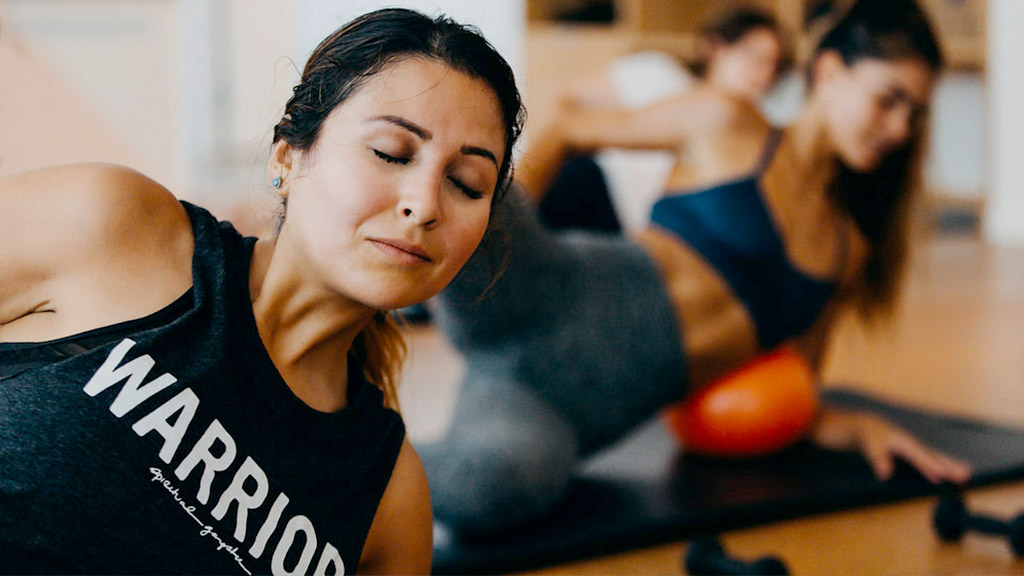Move
THE INCREDIBLE CONNECTION BETWEEN EXERCISE AND ANXIETY
When it comes to easing anxiety, we often look to mellow workouts like yoga or meditation. But new research shows that sometimes the best way to calm down is to kick your activity up a notch.
How does revving up your workout help counter anxiety? We asked psychologist Patricia Thornton, Ph.D., a spokesperson for the Anxiety and Depression Association of America, to break it down for us.
“When you perform aerobic exercise, you’re getting your heart rate up, sweating, practicing shallow breathing, etc., which are similar symptoms you experience when having an anxiety attack,” says Dr. Thornton. “What happens is you then begin to associate those physiological responses with something positive (“I’m exercising”), rather than something traumatic, like “I’m going to get stuck in the elevator.” This can help change the way your brain interprets anxiety symptoms altogether.”
Working out also releases endorphins and increases your brain’s production of neurotransmitters, such as serotonin and norepinephrine, all of which naturally makes you feel good. Deep breathing tends to reduce anxiety as well, notes Thornton. Plus, exercising has been shown to improve sleep quality, which in turn works to lower anxiety. And then there’s the whole sense of accomplishment that comes with reaching an exercise goal, which gives you a more positive outlook in general.
“It really is magical,” says Thornton.
“I specialize in anxiety disorders and OCD. When my patients start exercising, it’s almost like you turned on a switch, and they get better.
People feel better and are able to handle their symptoms better. In my opinion, it’s the aerobic activity.”
Thornton recommends trying to get at least 30 to 45 minutes of activity five times a week. If you can get outside, or join an encouraging, supportive community (like barre3), for some of those sessions, that could give you an extra mood boost, she adds. “Bottom line is you’ll feel so much better if you’re moving your body.”
When it comes to easing anxiety, we often look to mellow workouts like yoga or meditation. But new research shows that sometimes the best way to calm down is to kick your activity up a notch.
How does revving up your workout help counter anxiety? We asked psychologist Patricia Thornton, Ph.D., a spokesperson for the Anxiety and Depression Association of America, to break it down for us.
“When you perform aerobic exercise, you’re getting your heart rate up, sweating, practicing shallow breathing, etc., which are similar symptoms you experience when having an anxiety attack,” says Dr. Thornton. “What happens is you then begin to associate those physiological responses with something positive (“I’m exercising”), rather than something traumatic, like “I’m going to get stuck in the elevator.” This can help change the way your brain interprets anxiety symptoms altogether.”
Working out also releases endorphins and increases your brain’s production of neurotransmitters, such as serotonin and norepinephrine, all of which naturally makes you feel good. Deep breathing tends to reduce anxiety as well, notes Thornton. Plus, exercising has been shown to improve sleep quality, which in turn works to lower anxiety. And then there’s the whole sense of accomplishment that comes with reaching an exercise goal, which gives you a more positive outlook in general.
“It really is magical,” says Thornton.
“I specialize in anxiety disorders and OCD. When my patients start exercising, it’s almost like you turned on a switch, and they get better.
People feel better and are able to handle their symptoms better. In my opinion, it’s the aerobic activity.”
Thornton recommends trying to get at least 30 to 45 minutes of activity five times a week. If you can get outside, or join an encouraging, supportive community (like barre3), for some of those sessions, that could give you an extra mood boost, she adds. “Bottom line is you’ll feel so much better if you’re moving your body.”










0 people have left a comment. Join the conversation!
View Comments